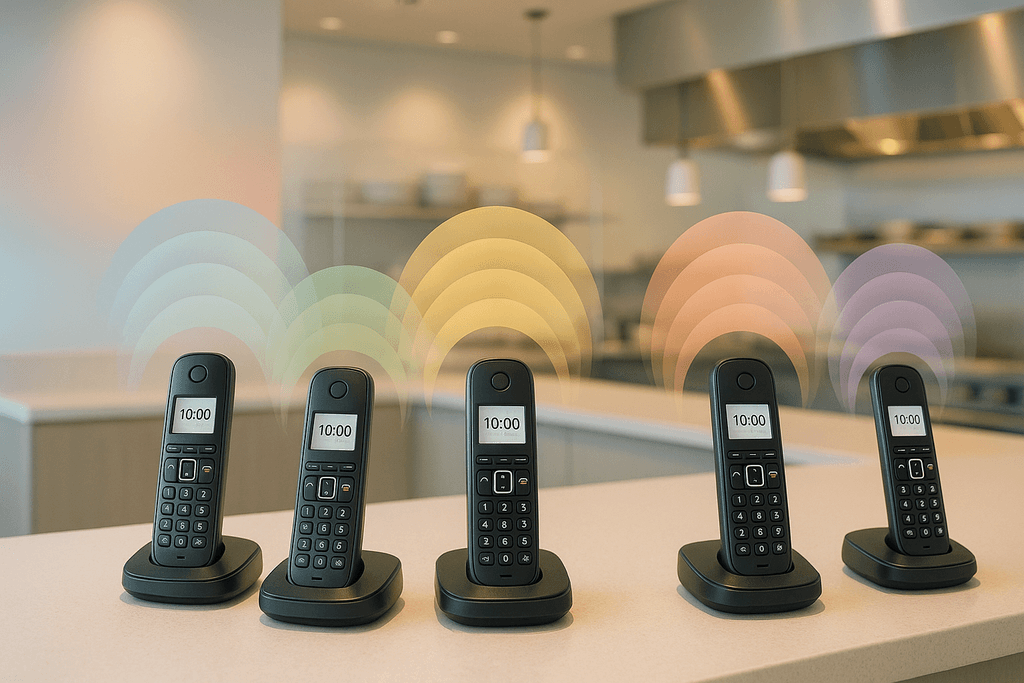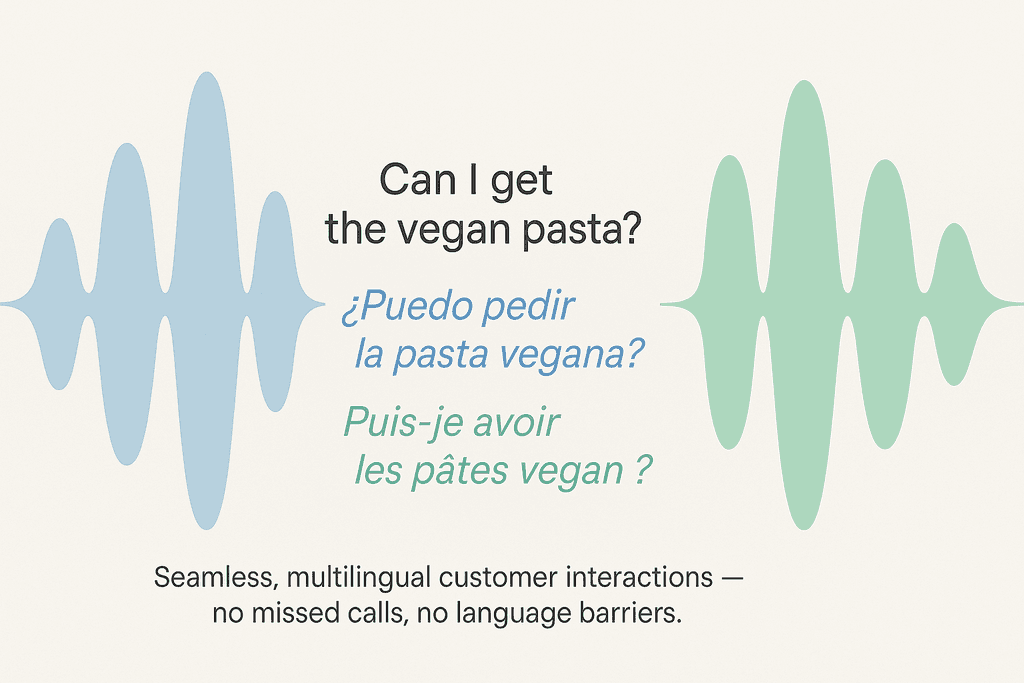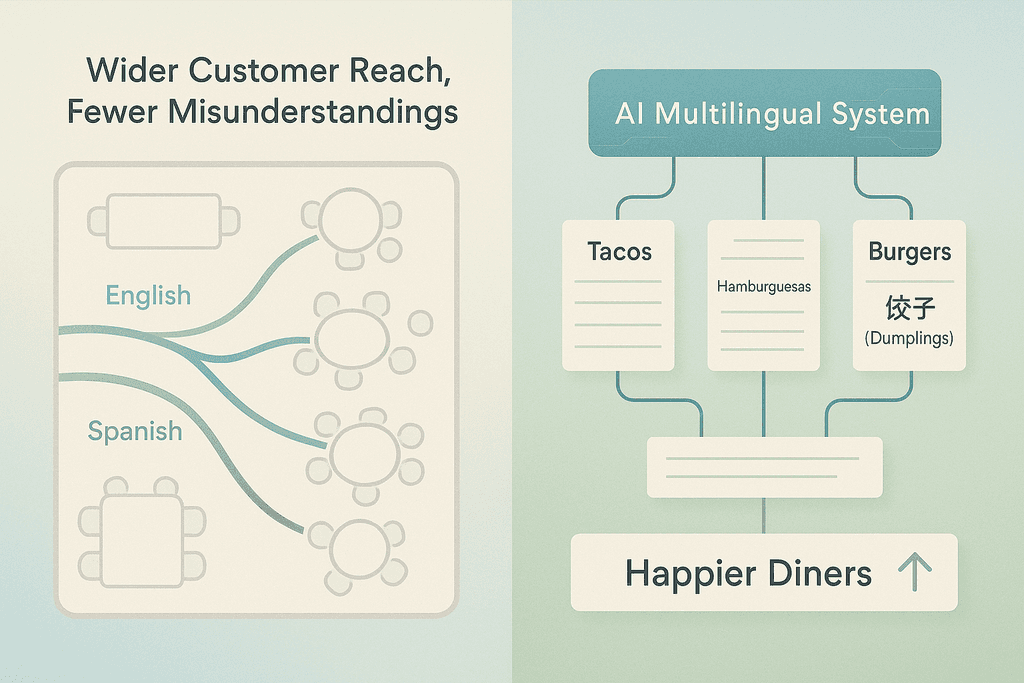August 27, 2025

Imagine losing a quarter of your restaurant's potential customers simply because they couldn't place an order in their preferred language. For many eateries, this scenario isn't just imagination—it's a daily reality. Multilingual phone systems are emerging as a game-changing solution, allowing restaurants to cater to diverse clientele and tap into previously unreached markets.
Did you know that over 20% of the U.S. population speaks a language other than English at home? This linguistic diversity presents both challenges and opportunities for restaurants aiming to serve their communities effectively.

As cities become more multicultural, restaurants face a growing need to communicate with customers in multiple languages. This shift affects everything from taking orders to answering questions about menu items.
These numbers highlight the importance of multilingual communication in the restaurant industry. Customers feel more comfortable and valued when they can interact in their preferred language.
Language barriers can lead to several issues for restaurants:
Addressing these challenges is crucial for restaurants looking to thrive in diverse communities. Multilingual customer support has become a key factor in improving overall customer experience.
Restaurants have tried various methods to bridge language gaps:
Each approach has its pros and cons, but technology is increasingly playing a central role. AI-powered solutions, like Loman.ai, are helping restaurants handle multiple languages efficiently without the need for extensive staff training or additional hires.
As the restaurant industry continues to adapt to changing demographics, the ability to communicate effectively across languages is becoming a key differentiator. Restaurants that embrace multilingual solutions are better positioned to serve their communities and grow their business.
Let's face it - calling a restaurant can be frustrating when there's a language barrier. Multilingual phone systems are changing the game for both customers and restaurants. By offering service in multiple languages, these systems make life easier for everyone involved.
Here are some key ways multilingual systems improve the customer experience:
The result? Happier customers who are more likely to order again. And for restaurants, that means more business and better reviews. It's a win-win.
Multilingual phone systems don't just help customers - they're a huge boost for restaurant operations too. Here's how:
These systems can handle a ton of calls at once, way more than a human could. That means fewer missed orders and happier customers, even during the busiest times.
And let's talk money. Hiring multilingual staff is expensive. An AI system that speaks multiple languages? Much more cost-effective in the long run. Our product, Loman.ai, can handle calls in several languages without breaking a sweat.
Multilingual phone systems open up whole new customer bases. Think about it - if you're the only pizza place in town that takes orders in Mandarin, you've just cornered the market for Chinese students and immigrants in your area.
Here's how these systems can boost your bottom line:
It's not just about immediate sales either. By making your restaurant more accessible, you're building long-term loyalty in diverse communities. That's the kind of goodwill money can't buy.
Want to see how this works in action? Check out this case study on how AI contributes to multilingual customer service in restaurants. It's pretty eye-opening stuff.
The food industry is changing fast, and language accessibility is becoming a must-have, not just a nice-to-have. Restaurants that get on board early are setting themselves up for success in an increasingly diverse market.
So, what's the takeaway here? Multilingual phone systems are a smart investment for any restaurant looking to grow. They make life easier for customers and staff, save money in the long run, and open up new markets. It's not about replacing human interaction - it's about making those interactions smoother and more efficient for everyone involved.

As restaurants embrace multilingual phone systems, we're seeing a major shift in how they connect with customers. These systems are more than just translators - they're changing the whole game of customer service.
Let's break down why this matters:
But here's the real kicker - AI is taking these systems to a whole new level. Machine learning algorithms are getting scary good at understanding context and nuance, not just words. This means conversations feel more natural, no matter what language is spoken.
We're also seeing this tech spread beyond just phone calls. Check out how it's expanding:
Of course, it's not all smooth sailing. Restaurants need to think about:
But the benefits are hard to ignore. Studies show that customers are way more likely to buy when they can use their preferred language. For restaurants, this could mean more orders, bigger tips, and customers who keep coming back.
At Loman.ai, we're all about making these multilingual systems work for restaurants. Our AI phone agent speaks multiple languages fluently, handling everything from orders to reservations. It's like having a super-smart, multilingual staff member who never takes a day off.
As this tech keeps evolving, we'll likely see even more personalized experiences. Imagine a system that remembers your favorite dishes and can suggest new ones in your language. That's the kind of service that turns first-time diners into regulars.
Multilingual restaurant phone systems are a game-changer for customer satisfaction. By speaking to customers in their preferred language, restaurants can create a welcoming atmosphere and build lasting connections. This approach not only boosts efficiency but can lead to significant sales growth over time.
Investing in language accessibility is more than just good customer service - it's smart business. As communities become more diverse, restaurants that cater to multiple languages gain a competitive edge. Loman.ai offers an AI phone agent that can handle orders and inquiries in multiple languages, helping restaurants tap into new markets.
For restaurant owners wondering how to get started, here are a few key steps:
By embracing linguistic diversity, restaurants can create a more inclusive dining experience for all. This not only satisfies current customers but also attracts new ones, setting the stage for long-term success in an increasingly global market.
Curious about how multilingual systems could work for your restaurant? Schedule a demo to see firsthand how AI-powered language solutions can transform your customer service.
Costs vary based on features and languages needed. Most providers offer tiered pricing plans starting around $50-100 per month. The return on investment often outweighs the cost through increased orders and customer satisfaction. Loman.ai provides customized quotes based on your restaurant's specific needs.
Most multilingual phone systems integrate with popular restaurant POS systems. It's important to check compatibility with your specific setup. Loman.ai, for example, works seamlessly with major POS providers like Square, Toast, and Clover.
Minimal training is typically required. Most systems are designed to be user-friendly. Staff mainly need to learn how to access order information and manage reservations through the new system. Many providers offer quick onboarding sessions to get your team up to speed.
Yes, customization is a key feature of quality multilingual phone systems. You can usually input your specific menu items, specials, and dietary information. This ensures accurate order taking and customer service in multiple languages. Loman.ai offers extensive customization options to match your restaurant's unique offerings and policies.
The number of supported languages varies by provider. Most systems offer at least 5-10 common languages, with some supporting 20 or more. It's best to choose a system that covers the languages most relevant to your customer base. Check with individual providers for their specific language offerings.

Enter your information in the form to receive a call from Loman and place an order like a customer would!